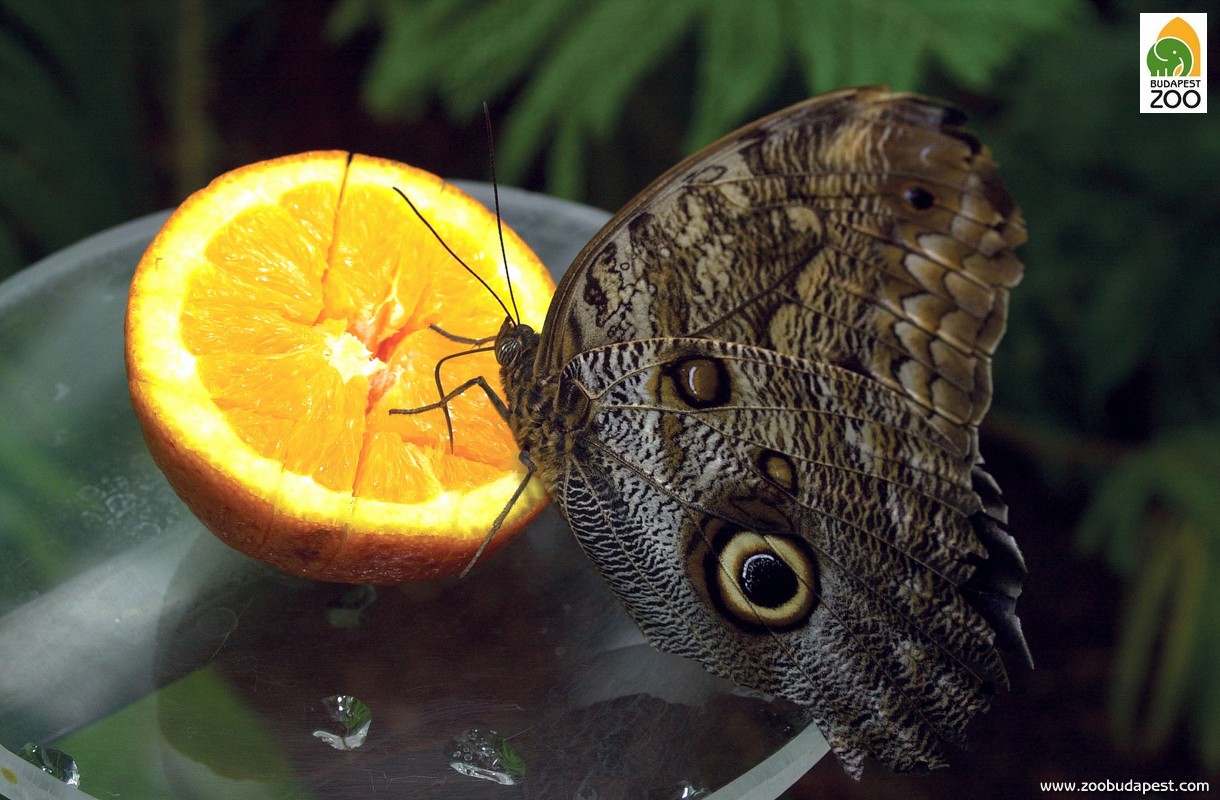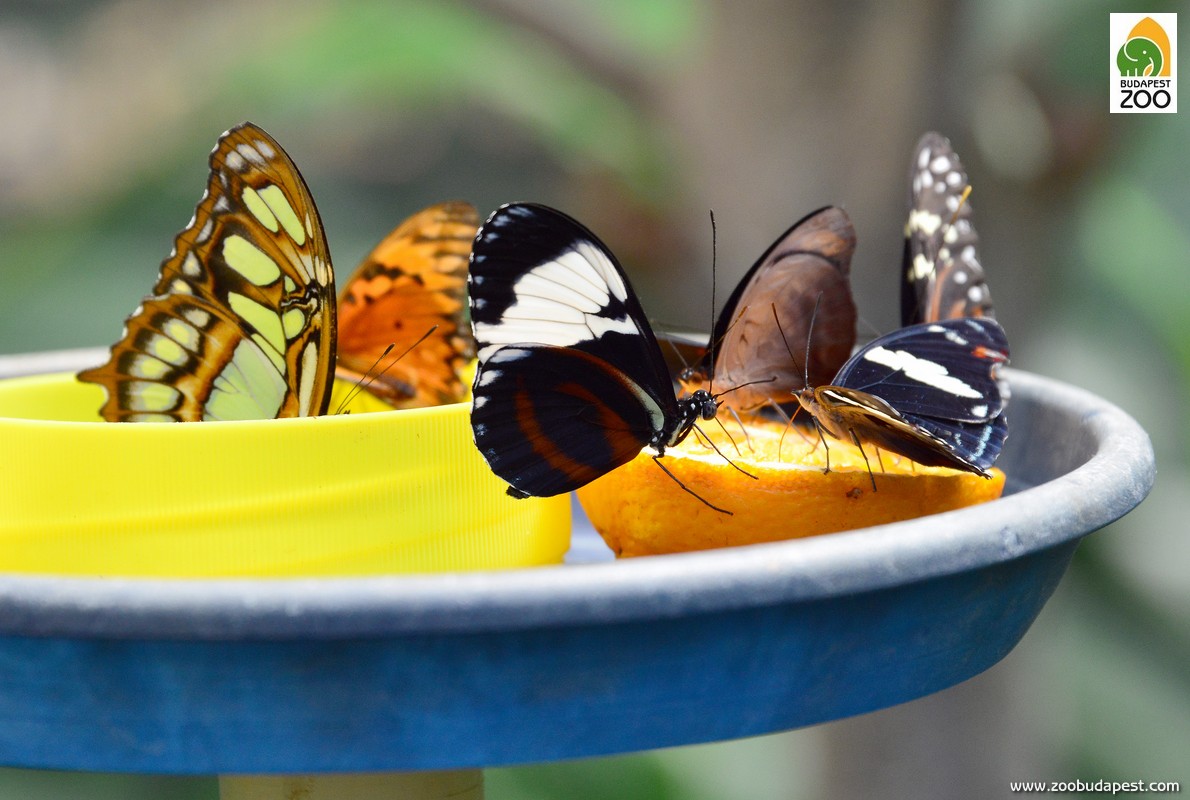What do the inhabitants of the Butterfly House eat? June 1, 2017
 The nutrition of butterflies is dramatically different in their larval stage (i.e. as a caterpillar) and as fully developed butterflies (i.e. as imago). While caterpillars consume leaves and, in addition to the energy needs of life, they take up nutrients to build their bodies, fully grown butterflies mainly eat high energy content nectar and pollen, from which their bodies are able to cover the energy needed for flying.
The nutrition of butterflies is dramatically different in their larval stage (i.e. as a caterpillar) and as fully developed butterflies (i.e. as imago). While caterpillars consume leaves and, in addition to the energy needs of life, they take up nutrients to build their bodies, fully grown butterflies mainly eat high energy content nectar and pollen, from which their bodies are able to cover the energy needed for flying.
For fully grown butterflies, the permanent vegetation in the Butterfly House serves as their food source. Namely, thanks to our gardeners, there are numerous plants blooming here such as several lantanas (Lantana sp.), the flowers of which are attractive to hungry butterflies. In addition to natural nectars, our butterflies also receive artificial nectars, mixed according to a special recipe. An important component of this is the famous Hungarian acacia honey. The carers also offer tropical fruit, banana, pineapple and orange to the butterflies.

Otherwise, the vegetation of the Butterfly House pleases the eyes of the public. The lantanas are not only loved by butterflies; their colourful flowers also give a nice view to the human eye. What is more, several orchids, bromeliads and tillandsias are on display in the Butterfly House.